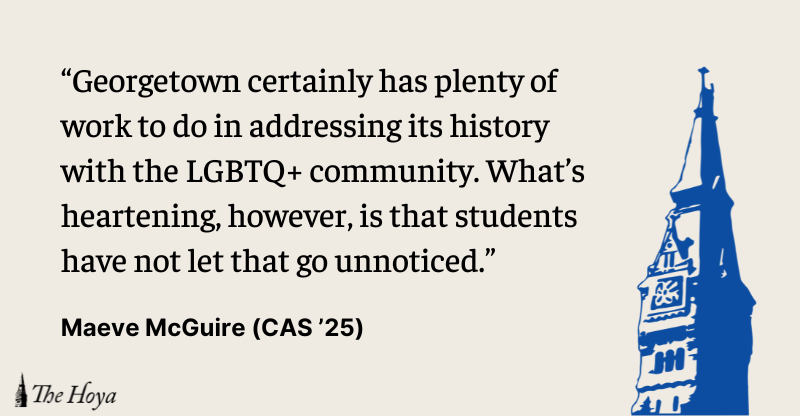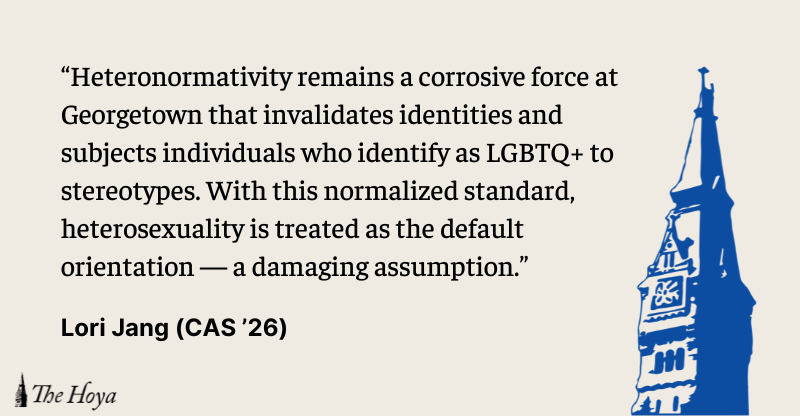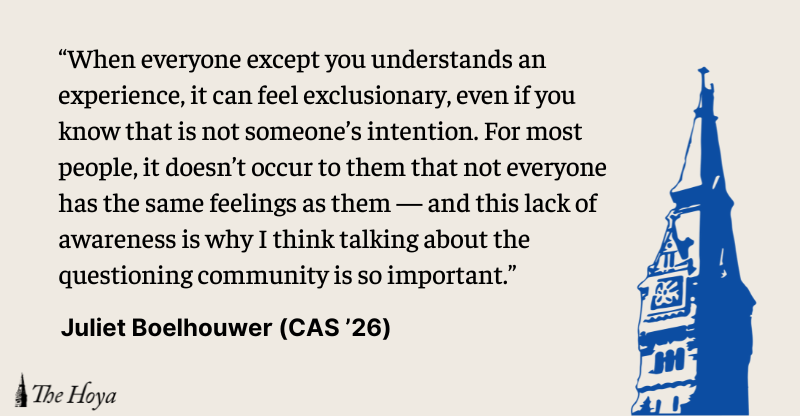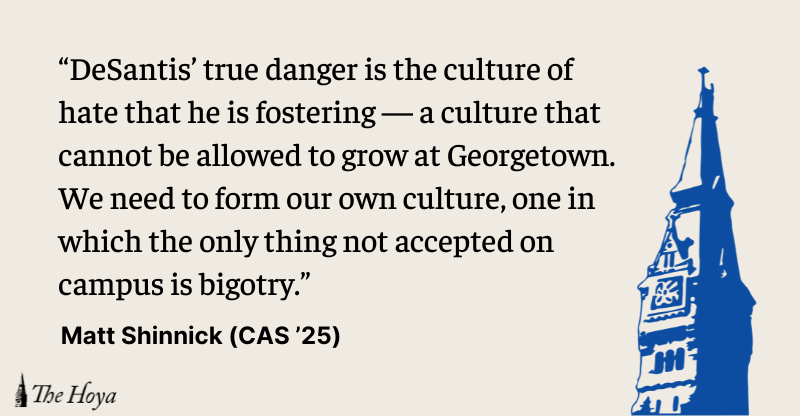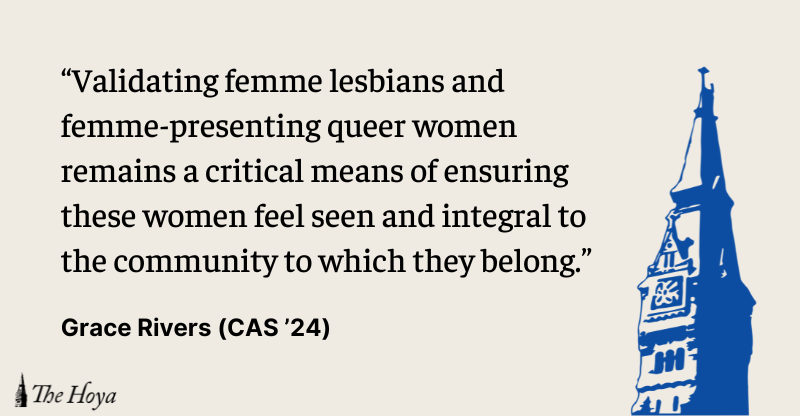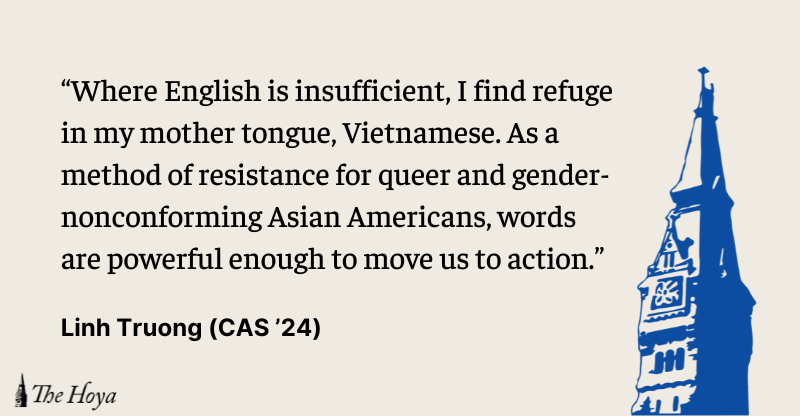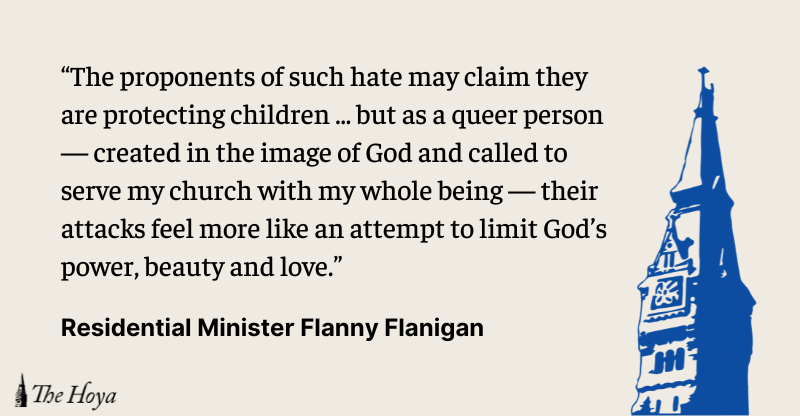“Wow, being gay at Georgetown … you must be fighting for your life.”
This is a common refrain that I hear from others when they learn that I am openly queer at Georgetown University. But I disagree.
Georgetown has a well-known culture as an academically rigorous university that closely aligns itself with Jesuit values and traditions. “Preppy” perfectly describes the mainstream culture here — but in this case, I am particularly focused on the traditional beliefs, values and fashion associated with being “preppy” that queerness does not fit into.
When I consider how this affects my experience as a queer student, I could deflect the conversation, confronting all the ways that the administration has discriminated against queer people and trans students. Georgetown certainly has plenty of work to do in addressing its history with the LGBTQ+ community. What’s heartening, however, is that students have not let that go unnoticed.
One example that immediately comes to mind is the administration’s silence surrounding the transphobic protests right outside the campus gates. As a queer student, the lack of support was disheartening. But with regard to student culture, there was a glimmer of hope.
The crowd of students I saw protesting against this hateful group filled me and many of my queer friends with a sense of security about our place on campus. Through the work of GU Pride, National Coming Out Day celebrations in Red Square and the student-led protests against hateful groups on campus, the student body is leading the charge to make queer and trans students feel safe and welcome at Georgetown.
Georgetown has an extraordinary queer and trans community on campus that creates a safe environment where students with different stories can come together. This community is rooted in the basis that our sexuality, and perhaps the way we express ourselves, does not follow the preppy culture Georgetown self-proclaims.
The key here is this shared experience. The unique preppiness that permeates Georgetown’s school culture knocks heads with queerness, but the result is a shared experience that builds a bond and calls for mutual support within this community.
Some argue that the LGBTQ+ community is operating against the traditional view and culture of Georgetown, specifically the religious history. And honestly, sometimes it feels like you are fighting against the palpably heteronormative institution that Georgetown remains. But I do not think it is as clear-cut as it seems. I see the LGBTQ+ community working together to create a space for queer and trans people here. In doing so, queer and trans students are applying Georgetown’s cornerstone ideals within their community.
Jesuit values such as “people for others” and “cura personalis” — Latin for “care for the whole person” — promote thoughtfulness and a sense of service and are embodied in the culture of inclusion, advocacy and strength that Georgetown’s queer and trans community epitomizes.
Georgetown itself has joined this cause by altering the wording of “men and women for others” to “people for others.” This phrasing subtly changes a whole population’s view of binary gender identification. An environment that is willing to make even small changes to make a marginalized community feel more welcome is a strong foundation to begin meaningful change.
The administration has also responded to the changing culture on campus in some larger ways. Founding the LGBTQ Resource Center in 2008 demonstrated Georgetown’s commitment to its queer and trans students. Lavender Graduation, a commencement ceremony hosted by the university every spring since 2009 that honors Georgetown’s LGBTQ+ community and its allies, symbolizes the university’s changing stance on LGBTQ+ students and the cultural changes on campus.
Students come to college searching to build a new community away from home, and at Georgetown, Jesuit values guide the way we do so. Community bonds are stronger because of the values that we are taught from our first days on campus.
Being a queer or trans student at Georgetown is not always an easy experience. While more can certainly be done to fully support student-led movements for change and help expand the environment of inclusivity on campus, it is important to acknowledge that this is not just an administrative movement.
Students need to look internally and reflect on how they can better support and welcome students who feel that their sexuality and gender identity runs counter to Georgetown’s founding values. But hopefully, Georgetown is changing too.
Maeve McGuire is a sophomore in the College of Arts & Sciences


